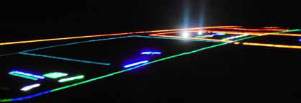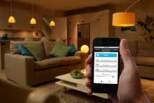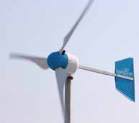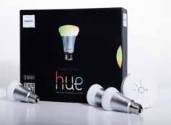Basic HTML Version





04
sustainabletimes
01732 759725
greenAgenda
Fit to fly
The Kestrel e400nb is a new wind
turbine certified for DECC’s Feed-In
Tariff (FIT) scheme. It can produce
3,922kWh annually, worth £1,098 at
the FIT rate of 28p per kWh produced.
Ideal for homes or small businesses
with the space to install it, the small
wind turbine can withstand winds of
up to 156.6mph.
www.microgenerationcertification.
org
Cloud computing is often promoted as a green alternative
to on-site servers but a new report fromWSP Environment
& Energy and the Natural Resource Defense Council
(NRDC) suggests that the reality might not be so clear cut.
The US study found that running a computer application in
the cloud is generally more energy and carbon efficient than
a server room, but that it was not a foregone conclusion and
there were a number of factors that could influence overall
energy and carbon efficiency.
The three main ones are:
n
The carbon emission factor of the electricity used: data
centres can be based anywhere in the world and the
amount of carbon emitted for each unit of electricity
varies widely from country to country;
n
The energy efficiency of the data centre or the server
room: usually measured in terms of power usage
effectiveness (PUE) for data centres; and
n
How much the equipment is used: data centres running
at low capacities aren’t nearly as efficient as those fully
used. This is critical as PUE takes little consideration of
usage rates.
David Symons, Director of WSP Environment and Energy, said:
“There are many reasons for moving to cloud computing, but a
company choosing to do so for pure energy efficiency reasons
needs to look closely at their whole IT set up, as well as those
of third party offerings. Not all clouds are created equal. An
on-site server room that is run with energy efficiency best
practices may be a greener alternative to a ‘brown cloud’.”
NDRC, which commissioned the research, advises small
and medium-sized businesses to ask cloud service providers
for full disclosure of the carbon efficiency of the services they
provide and consider all the key variables that contribute to
the efficiency of their own IT operations.
The full report, The Carbon Emissions of Server Computing
for Small- to Medium Sized Organisations, can be accessed at
http://tinyurl.com/9nra5kn
A fairy wonderland – for very tough fairies
Home lighting system gives complete control
The world record for the largest light
picture using LEDs has been smashed at
a naming ceremony for Oltin Yo’l Gtl in
Shurtan, southern Uzbekistan. The joint
venture to make high performance, low
emissions fuels commissioned Malwell
Corporate Projects to recreate a full scale
plan of its energy plant spread over three
quarters of a million square metres. All
in all, it took 1,012,840 lights, 24km of
lighting cable, 14km of power cables
and 302 kilowatts of power from three
generators, a railway station and a nearby
gas plant. MalcolmWells, director of
Malwell Corporate Projects, said:
“For six days, we worked round the clock
in temperatures of over forty degrees,
in thirty kilometre plus winds. It was
like building a fairyland for very tough
fairies.”
Whether you see the Philips Hue as a force for
good or a waste of energy depends largely on
whether you leave your lights on or off when
you leave home. Described as the smallest
web-enabled LED home lighting system, it
allows you to control and personalise lighting
using a smartphone or tablet.
Hue consists of a unit that plugs into a home
WiFi router, energy-saving LED bulbs that screw
into existing light sockets and an app that can
be used to control lighting remotely (for the
benefit of pets or to give the impression that
the house is occupied); to program lighting
timers; or to customise light settings and colours.
There are also a number of pre-programmed
lighting options including four with the optimum
shade and brightness for relaxation, reading,
concentration and energy.
Philips is developing other applications such as
the ability to integrate Hue with sound and video
or geo-location services that sense when you are
near home and turn the lights on automatically.
A £179 starter pack includes three 600 lumen
(50 watt equivalent) light bulbs; a bridge (and
power supply) that can support up to 50 bulbs; a
LAN cable; and download instructions for the app.
Individual bulbs cost £49 each.
www.meethue.com
Cloud computing not
always greenest option
The power of the
word
Logitech has launched a solar-powered,
PVC-free keyboard for Mac, iPad and
iPhone. The LogitechWireless Solar
Keyboard K760 is Bluetooth-enabled,
pairs with up to three devices and
switches between them with the push
of a button. Integrated solar cells can
charge the keyboard in any light.
A full charge will last for three months.
Logitech’s Wireless Solar range already
includes keyboards for PCs (the K750)
and iPads (the Folio).
www.logitech.com

